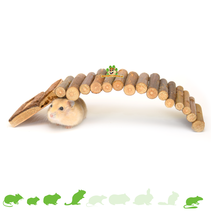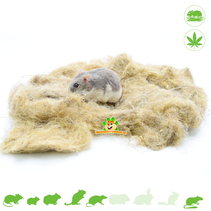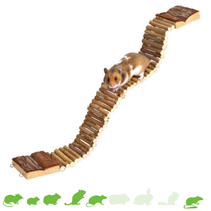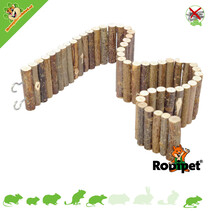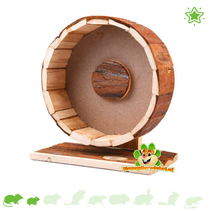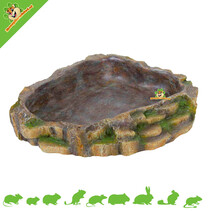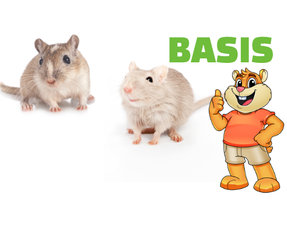
Basic Hamsterscape 100 x 40 cm #2
Basic Hamsterscape 100 x 40 cm #2
We have a new Basic Hamsterscape again. We have made an elevation of ground cover on both sides of the terrarmium to create depth. Here too we use a supporting structure by means of a plateau surrounded by a willow bridge, a running wheel and a spacious hamster house give the scape the foundation it needs. The terrarium is a 100 x 40 x 40 cm with sliding door. This scape is suitable for a dwarf hamster.
Use the willow bridge as a wall
We know that willow bridges are often used as walls, which in itself does not have to be a problem, but we would like to emphasize that this is only possible if the beams are not too far apart. Willow bridges are not specially made for a wall, but only as a bridge. The distance of the bars must be checked at all times to ensure the safety of the animals. The wood can be pressed together if necessary. The gaps between the wood can also be filled with ground cover or dried moss.
Hide sandbox
In this scape we have hidden the hamsterscaping sandbox under the exercise wheel. In this way the running wheel is stable, takes up less space and the sandbox is suddenly partially closed, so that the sand stays inside a little more.
Cotton and Cotton
We chose cotton ground cover for this scape. This ground cover absorbs very well, absorbs odors and makes it possible to dig tunnels. The tunnels in particular are easy to dig and remain in place well. Especially when the animals make the tunnels against the glass, you can really see the inside.
Coconut is wonderful to toss around in
This time we also added coconut, how nice is that!? The coconut can ideally be used as a top layer (loose layer) or as a mix layer. As a top layer, the coconut has the function of a kind of foraging layer, which actually means that it is a layer in which the animals can sniff around. We therefore recommend sprinkling something tasty through the coconut top layer every now and then. Your own food can also be used for this. The animals immediately start searching and have something to do, but above all they can show their natural behavior in this way and that is the best thing to see!
The coconut is also a nice mixed layer. We do not use the coconut in this scape in this way, but we would like to tell you about it. Mixing the coconut with another ground cover gives it more volume and not so much of the ground cover itself needs to be used.
Dried Moss
On the one hand, the dried moss has a decorative function, but on the other hand it can also be used as nesting material for animals. They can pick pieces of moss as needed and take them to their nest. If you would rather not have the hamsters pick the moss, give the animals extra nesting material so that they leave the moss alone. They generally dig under it and leave the moss behind.
Wooden running wheel
We used the Forest Exercise Wheel here. This is a robust exercise wheel from the Trixie brand. Wood has the great advantage that the nails also wear out when animals walk over the surface. A disadvantage is that wood is a natural product and can work. If you have a "treadmill peeper" at home, the CSI Spray is a good tip! The exercise wheel is 20 cm, which is a good size for a mouse and a dwarf hamster. For a Syrian Hamster (Golden Hamster), an exercise wheel from 28 cm is good.
Wooden Igloo House
We recommend placing at least one house in the accommodation. Many hamsters like to dig in, but when they are above ground they also like to have hiding places where they can quickly hide in an emergency. It is good to know that houses give animals a sense of security and an animal that feels safe will be calmer and more open to its caregiver.

